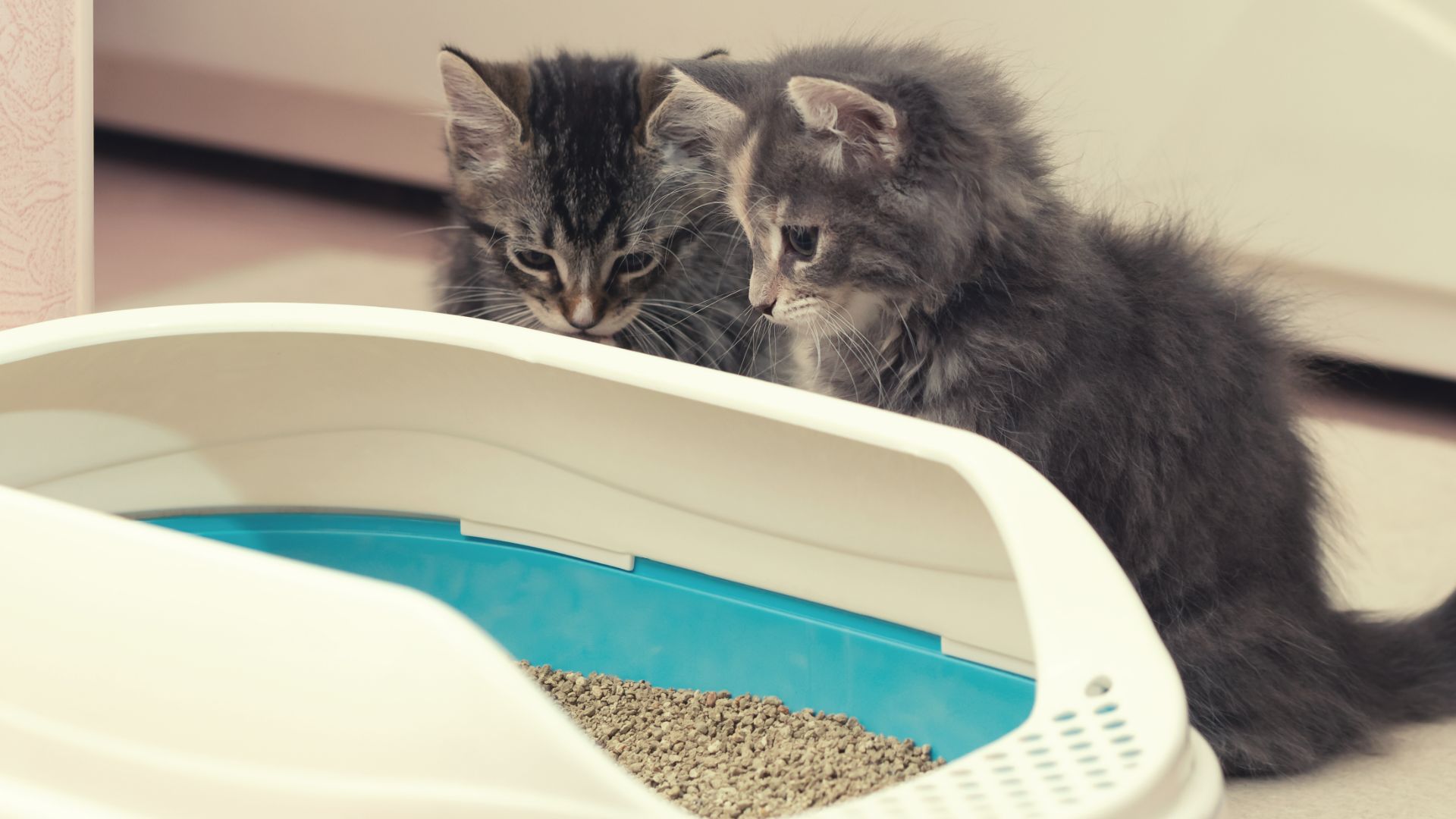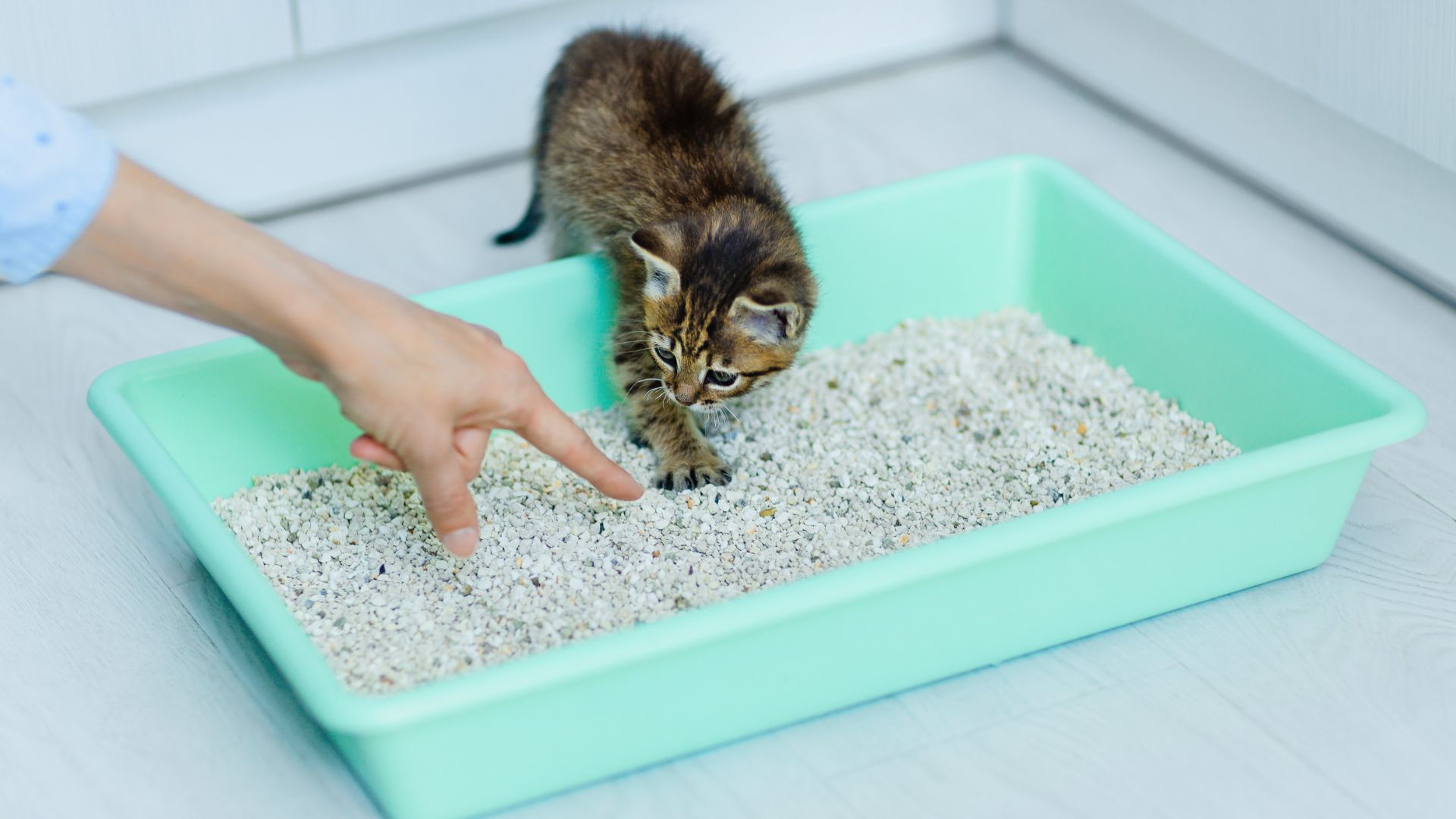How to get a cat to use a litter box
Our vet answers your questions and provides tips on how to get a cat to use a litter box

Although litter-training may seem like a relatively straightforward topic, it’s natural to have questions about how to get a cat to use a litter box. Instilling good litter box habits, as well as choosing the best cat litter and location for your feline, is essential to allowing you to form a positive bond with your cat, and there are a number of factors that can interfere with this most basic aspect of feline hygiene.
If you have questions about litter box usage, or you are facing litter box struggles, such as training an older cat to use a litter box, read on to learn more.
Do cats automatically use a litter box?
Many people say that cats will use a litter box “automatically”. While there is some truth to this statement, litter box usage isn’t always quite as automatic as it seems. Cats instinctively want to expel their waste in dirt, sand, or dust, in an area where they can scratch around and then bury their urine or cat poop.
While a litter box certainly meets these criteria, potted plants and other similar surfaces can also serve as a natural outlet for your cat’s elimination habits. Therefore, it’s up to you to ensure that your cat’s litter box is the most appealing or “automatic” place for them to eliminate.
How to train a kitten to use a litter box
In most cases, litter training a kitten simply involves introducing them to the box and ensuring that it is readily available. Your kitten’s litter box is designed to be an appealing spot for elimination, with soft, sandy litter that your kitten can scratch in and use for elimination.
1. Keep your kitten in close proximity to the litter box
When you bring home your new kitten, place them in their litter box immediately. This gives your kitten the opportunity to become familiar with the appearance, smell, and location of their litter box.
Keep your kitten within close proximity of the litter box, at least for their first few days in your home. Consider confining your new kitten to a small room with their litter box when unattended. Keeping your kitten close to their litter box, instead of giving them free rein of the house, can maximize your chances of success. It also reduces mess while you find out the best way to keep cat litter off the floor.
Get the best advice, tips and top tech for your beloved Pets

2. Consider the timing
After your kitten eats, drinks, or finishes a big play session, set them gently in the litter box. This will reinforce the location of the litter box and increase the likelihood of them urinating or defecating in the box.
Once your kitten has successfully used the litter box a few times, you can feel comfortable that your kitten is well on the way to being litter trained. At this point, you can begin increasing your cat’s ability to roam a bit further from the litter box. Keep in mind, though, that it probably isn’t reasonable to expect a young kitten to travel a long distance to their litter box!
How long does it take for a cat to get used to a litter box?
Most kittens and adult cats will get used to their litter box rather quickly. If you show them their litter box and ensure that they have easy access to it, while blocking their access to other areas that they could mistake for an elimination spot, most cats will accept a litter box readily.
If you have had your cat or kitten for several days and they are not yet using their litter box normally, you may need to be proactive and make some changes.

Why won’t my cat use the litter box?
When a cat is avoiding the litter box, it’s important to first rule out medical causes. Urinary tract infection, feline lower urinary tract disease, intestinal parasites, or even cat constipation can all lead a cat to avoid the litter box.
Schedule an appointment with your veterinarian to rule out medical conditions and ensure that this is strictly a behavioral issue.
Once your vet has ruled out medical conditions, consider the possible underlying motivations for your cat’s avoidance of the litter box. Cats are typically reluctant to use the litter box for one of two reasons: they dislike their litter box or they have found an alternative toilet location that they prefer.
There are a number of factors that may lead your cat to dislike their litter box. Consider the following factors:
- Litter material: Most cats prefer conventional, clumping types of cat litter. If you’re using an alternative cat litter (like crystals, wood pellets, or recycled paper), consider changing litter
- Litter box type: Most cats prefer a large litter box, with low sides and plenty of room to turn around. If you’re using a small, covered litter box, your cat may find the litter box unappealing. Here are our guides to the best cat litter boxes and best automatic cat litter boxes.
- Litter box location: Your cat’s litter box should be in a quiet location that is convenient to where your cat spends time, not located in next to a busy bathroom where you dispose of your flushable cat litter or shoved into a far-away corner of the basement
- Cleanliness: Ensure that your cat’s litter box is scooped daily. Even with high-quality clumping litter, you still should fully change your cat’s litter every few weeks and scrub the litter box with a mild soap
- Competition with other cats: In multi-cat homes, inter-cat conflict can discourage anxious cats from using the litter box. In order to help keep the peace in a multi-cat household, ensure you have one litter box for each cat, plus one spare.
PetSafe ScoopFree Crystal Cat Litter | Amazon
These disposable trays make for quick litter tray cleaning. Each odor-eliminating tray can last up to 30 days and is available in scented and unscented varieties.
Cat's Pride Scented Flushable Clumping Litter | Amazon
This lightweight litter is actually made by porous clay which the maker says has passed rigorous tests for flushability, two clumps at a time. It doesn't contain any harsh chemicals and it's free from overpowering fragrances although it does control odor.
Dr. Elsey's Cat Litter | Amazon
This clay litter is low dust, hard clumping for ease of scooping and low tracking, so it won't get trodden through your home
SWheat Scoop | Amazon
Made from wheat, sWheat easily clumps while also eliminating odors. Certified flushable by independent researchers, the SGS US Testing Company, the manufacturer advises scooping the litter box daily, scooping clumps into the toilet and letting them soak for 20 minutes before flushing.
World’s Best Cat Litter | Amazon
This flushable, unscented corn-based cat litter is septic-safe and 99% dust-free. It's ultra absorbent and low tracking.
Streyant Mixed Cat Litter | Amazon
Made from soybean and clumping clay, Streyant's offering will let you flush clumps that are less than 3in (8cm) although it does suggest chucking it in the trash can if your home's pipes are old.
If your cat has found another preferred area for elimination (for example, on a bathroom rug or on your dirty laundry piles), use an enzymatic cleaner (like this one on Amazon) to address odors and then block your cat’s access to that surface. Ensure that rugs and laundry are picked up and/or close doors as needed, so your cat cannot access their preferred elimination spot.
With time (and perhaps some guidance from your vet), you can work to make your cat’s litter box the most appealing location for them to eliminate and retrain your cat to use the litter box.
Read next: How to train an outdoor cat to use a litter box and Can I use sand as cat litter? Or, discover how self-cleaning litter boxes work and the risks of pregnant women and cat litter

Bethany is an experienced writer who has been writing across the pets and equestrian sector for eight years.
Dr. Barnette is a graduate of the University of Florida, where she received both her B.S. in Zoology and her Doctor of Veterinary Medicine (DVM). She has 15 years of clinical experience as a small animal veterinarian, treating dogs, cats, and occasional exotic patients. She now works as a freelance veterinary writer, creating educational content for veterinarians, veterinary team members, and dedicated pet owners. Dr. Barnette lives in southwest Florida with her husband and daughter (plus two cats, a dog, and a rescued dove!) and enjoys kayaking, biking, and hiking. Learn more about Dr. Barnette at www.linkedin.com/in/catherinebarnette.
- Bethany StoneFreelance Writer







